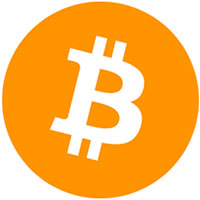The US economy has entered a deep recession since the beginning of the COVID-10 pandemic, and American corporations along with it. Dividends are in jeopardy. Payments are usually made from net profit. Another option for emergency situations is to attract dividend debt. When the income of enterprises is reduced, and the bond market is broken, both options are not suitable. The only way out is to reduce dividends or completely abandon them.
In this review, we talk about US corporations that can increase payouts this year. According to the Refinitiv forecast, there are 315 such enterprises in the S&P 500 index. The range of possible growth is from 0.1% to 900%. We will analyze the list and select the most interesting securities.
A “rough estimate” of dividend stories
- Step 1. Narrow down the selection to “dividend aristocrats”. These are companies that have increased payments for at least 25 consecutive years. So, we’ve got a list of 66 shares. According to the “signal theory”, enterprises seek to maintain dividends at the current level or increase in order to demonstrate the solid state of the business. In the case of "dividend aristocrats" the question is even more acute: it is especially important for them not to disappoint market participants. This plays in favor of favorable expectations on the dividend policy of such companies.
- Step 2. In the US market, solid dividend yield starts at 3.5% per annum. We filter the selection by this criterion. Next, we will choose enterprises that, according to the Refinitiv forecast, can increase dividends by more than 3% this year. So, we have received 12 shares.
- Step 3. We remove companies from the list for which a decrease in earnings per share is expected in the next 5 years, negative average annual dynamics. There are 8 shares left.
- Step 4. Evaluate the stock by the criterion of the level of payments from net profit. If the payout ratio exceeds 70%, then with a decrease in revenue, the company may not be able to cope with payments and cut dividends. 4 out of 8 shares indicate such risks.
- Step 5. Let's take a closer look at these stocks.
Chevron's payout ratio is 237%, the figure is 48% higher than the median for 10 years. We remove these shares from the dividend list.
Realty Income, a real estate company, and Amcor, a paper maker, have negative free cash flow (FCF) with a high debt burden. In an ideal world, dividends are paid, and debts are repaid from FCF, as this is “real” money, cleared of accounting fraud. We remove these stocks also.
We leave the biopharmaceutical company AbbVie. Its free cash flow in the I quarter was high. Refinitiv's forecast of how much the FCF will cover the level of debt in the next 12 months is quite positive. Payout ratio does not exceed the median value for 10 years.
Result: we received a list of 5 dividend securities, which are worth paying attention to. All shares are traded on major exchanges, which means that they are available for purchases.
AbbVie (ABBV)
AbbVie is a a biopharmaceutical company that increased dividends for 49 consecutive years. Legally, the company arose in 2013 as a result of the separation from Abbott Laboratories. Dividend history takes into account payments prior to the reorganization of the parent company.
The AbbVie’s immunological medicine, Humira, is a leader in the sale of medicines in this direction. In 2019, it accounted for about 45% of the company's revenue. This is a risk factor. In 2023, cheaper Humira analogues will enter the US market. Increasing competition and the possibility of adverse test results for new medicines are common risk factors for companies in the biopharmaceutical industry.
Positive factor: AbbVie has a strong line of medicines that are in the process of development and testing, including the oncology segment. The company is actively expanding partnership projects, in particular, collaborating with Pfizer, Genentech and Johnson & Johnson. This week, regulators have approved the purchase of Allergan by Botox. The deal is expected to close in May.
The company is highly profitable. The net profit margin, net profit/revenue, over the past 12 months was 40%. The Refinitiv’s forecast suggests a similar value for the next 12 months. The median for the group of comparable companies is 28%. The higher the profitability, the more effective the business.
In the next 12 months, an 8.7 percent increase in earnings per share (EPS) is expected. Moreover, ABBV multipliers are generally below the average value for the group of analogues. For example, P/E (price/profit) is 16 versus 23. This may be a sign of underestimation, comparative "cheapness", of securities.
The analysts’ consensus target is $94, which implies a 12 percent growth potential from Thursday's closing level, May 07, 2020 at $84. Since the beginning of 2019, these shares have been moving in a wide side. The nearest resistance is $90–93. Locally we do not rule out a drawdown. The static zone of $78–75 may be the support region.
Sysco (SYY)
The company is engaged in the distribution of food, utensils and kitchen equipment for restaurants, medical and educational institutions, hotels. Sysco is a world leader in this field. The company increased dividends for 49 consecutive years.
The coronavirus COVID-19 pandemic has hit Sysco's business. Due to quarantine lockdown, many Sysco’s customers have closed their businesses. The situation should improve after removal of restrictive measures. In the meantime, the company is trying to refocus on deliveries to supermarkets, many of which thrive in a pandemic.
Sysco has a high return on equity (ROE) of 62.5%. This is due to high credit load. The net profit margin is 2.4%. Modest figure is characteristic of the industry. The median for the group of comparable companies is 0.9%, the largest in the world retailer Walmart has 2.6%.
In the next 12 months, a 37% drop in earnings per share (EPS) is expected. However, the situation will improve in the long run. The Refinitiv forecast assumes 7.4% average annual EPS growth over the next 5 years. Given SYY’s financial indicators, multiples are traded unjustifiably “expensive” relative to competitor averages. For example, the P/S indicator (price/sales) that is most suitable for evaluating retailers is 0.45 versus 0.13.
The analysts’ consensus target is $51, stocks are slightly above this value. From the low of the end of March, shares rebounded by 127%. This was followed by a rollback. Now the nearest resistance is $56. We do not exclude further drawdown. The zone of $44–42 may be the support level, formed by the Fibonacci retracement levels from the recent growth wave.
General Dynamics (GD)
General Dynamics is one of the largest manufacturers of military and aerospace equipment in the world. It’s included in the list of suppliers for the US military-industrial complex. The company increased dividends for 28 consecutive years.
25% of GD's revenue comes from the aviation segment, so the COVID-19 coronavirus pandemic will negatively affect the company's revenues. 75% of revenue is generated from the defense sector, which is more stable in a recession.
Profitability indicators of the company exceed the average values ​​for competitors. Net profit margin is 8.6% versus 7.4%. Over the next 12 months, a 1.4% decline in earnings per share (EPS) is expected. In the long run, the situation will improve slightly. The Refinitiv forecast suggests a moderate 4.8% average annual EPS growth over the next 5 years. Average competitor score is + 10.6%.
GD multipliers are slightly lower than the average values ​​for the group of analogues. For example, the EV / EBITDA indicator that is most suitable for evaluating industrial enterprises is 9.3 versus 10.7. However, taking into account financial indicators, there is no particular underestimation of shares compared to competitors.
The analysts’ consensus target is $167, which implies a 31% upside from May 07, 2020 closing level at $127. From the low of the end of March, the stock rebounded by 40% and ran into strong resistance at $141.5. This was followed by a rollback. The stocks worked out a 50% Fibonacci retracement from the growth wave. The technical picture is now positive.
Walgreens Boots Alliance (WBA)
Walgreens Boots Alliance is a pharmacy corporation that was created in 2014 as a result of the takeover of the Alliance Boots pharmacy chain by Walgreens. Dividend history takes into account payments prior to the reorganization of the parent company. According to this approach, the WBA increased dividends for 44 consecutive years. The company owns nearly 19 thousand medicine stores and cosmetics stores in 11 countries. WBA is also the largest pharmaceutical distributor that supplies medicines to other pharmacies.
The COVID-19 pandemic hit Walgreens retail segment, especially in markets outside the United States. As a positive point, we note points for testing on COVID-19, opened by the company, as well as the launch of a medicine delivery program. All things being equal, the health sector is not too dependent on economic cycles, therefore it is more stable in a recession.
The company is low margin. Net profit margin is 3.6%. Modest figure is characteristic of the industry. The median for the group of comparable companies is 1%. An insignificant 0.7% increase in earnings per share (EPS) is expected in the next 12 months. The Refinitiv forecast assumes a 2% average annual increase in EPS over the next 5 years. The average competitor score is + 8.2%.
WBA multipliers do not give special signals. In general, they are lower than those of comparable companies. However, the P/S indicator (price/revenue) that is suitable for evaluating retailers is 0.26 versus 0.1.
The analysts’ consensus target is $47, which implies a 15% upside from May 07, 2020 at $40.7. With the recovery of the US market, the shares did not show steady growth. Now they are close to the March lows. The technical picture indicates the possibility of a decline in the region of $36.
Archer Daniels Midland (ADM)
Archer Daniels Midland is an international agricultural corporation. Archer Daniels Midland produces and processes agricultural products. The main business segments are vegetable oil production, corn production, service, storage and transportation. The company increased dividends for 44 consecutive years. The ADM business is related to essential goods, so its revenues can be relatively stable in a recession.
The company is low margin. Net profit margin is 2.3%. The median for the group of comparable companies is significantly higher and amounts to 5%. In the next 12 months, a 6.8% increase in earnings per share (EPS) is expected. At the same time, on average for the group of comparable companies, the Refinitiv forecast assumes + 11.8%.
Taking into account financial indicators, the discount of shares by multiples relative to competitors looks quite justified and does not indicate a special “cheapness” of ADM. For example, P/E is 12.6 versus 17.6.
The analysts’ consensus target is $47.5, which implies a 36% upside from May 07, 2020 at $34.8. From the low of the end of March, the share rebounded by 33% and ran into strong resistance at $38.5. This was followed by a rollback. The technical picture indicates the possibility of reducing securities to the region of $33, where the level of 61.8% Fibonacci correction from the previous growth wave passes.

















